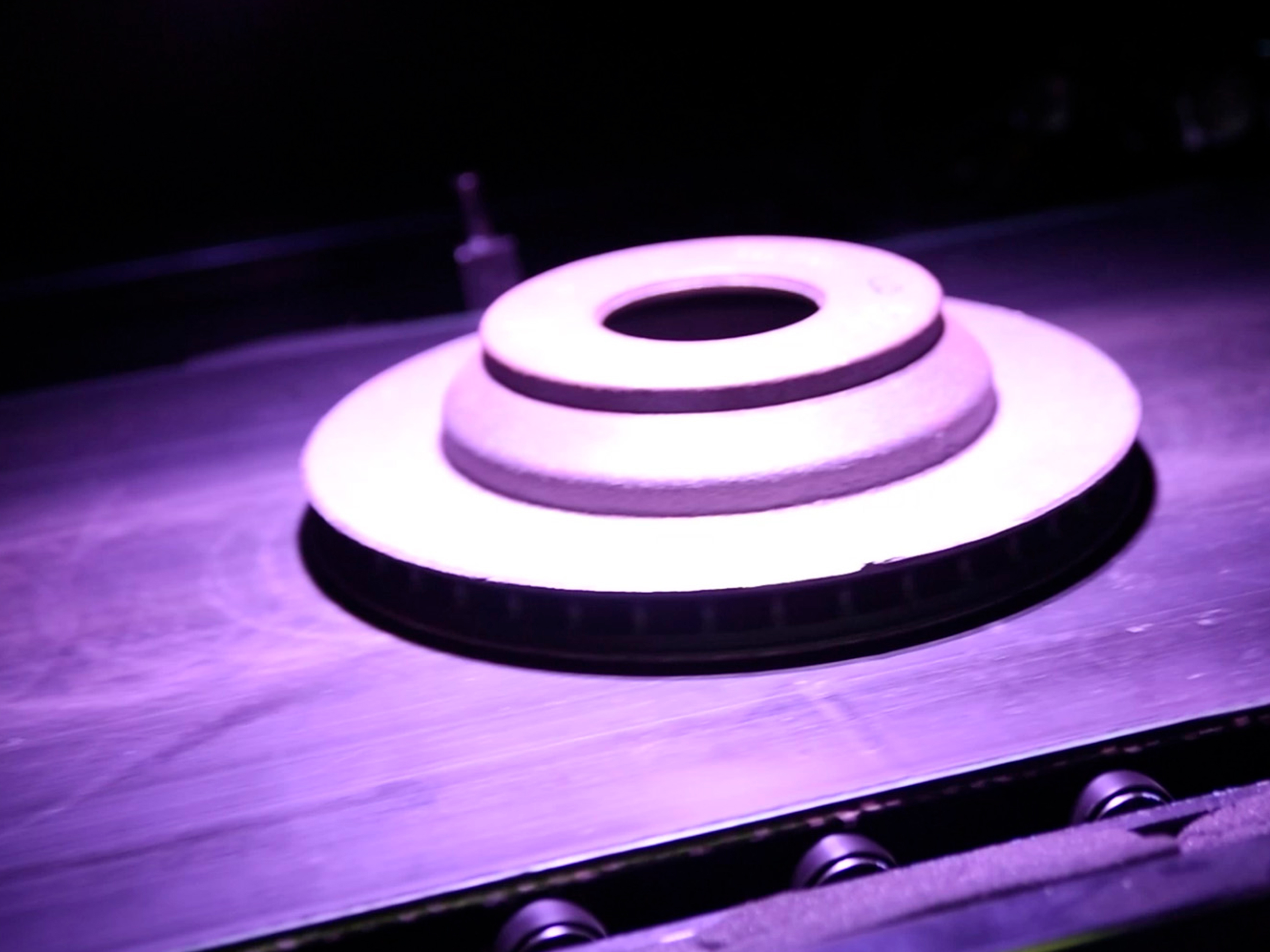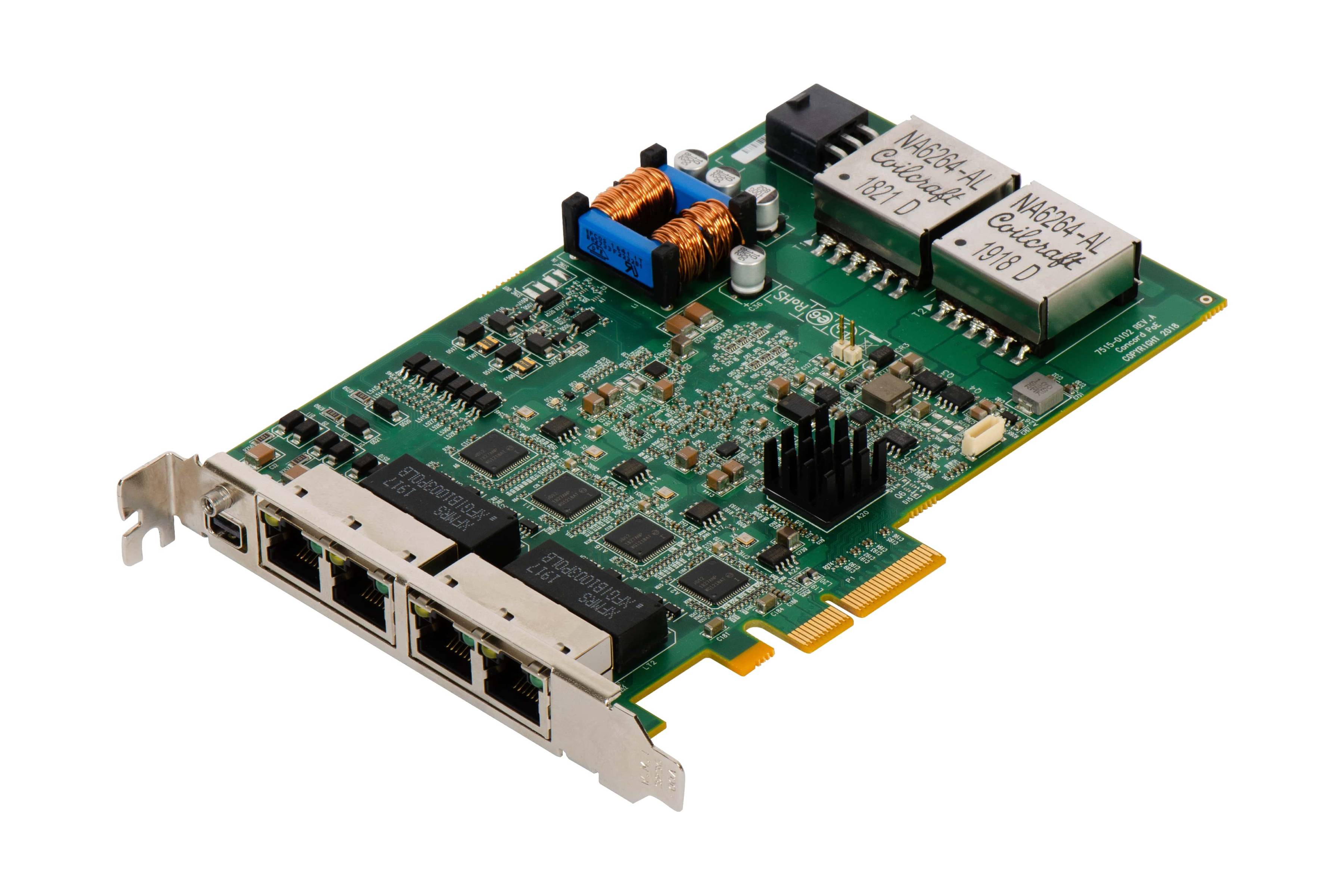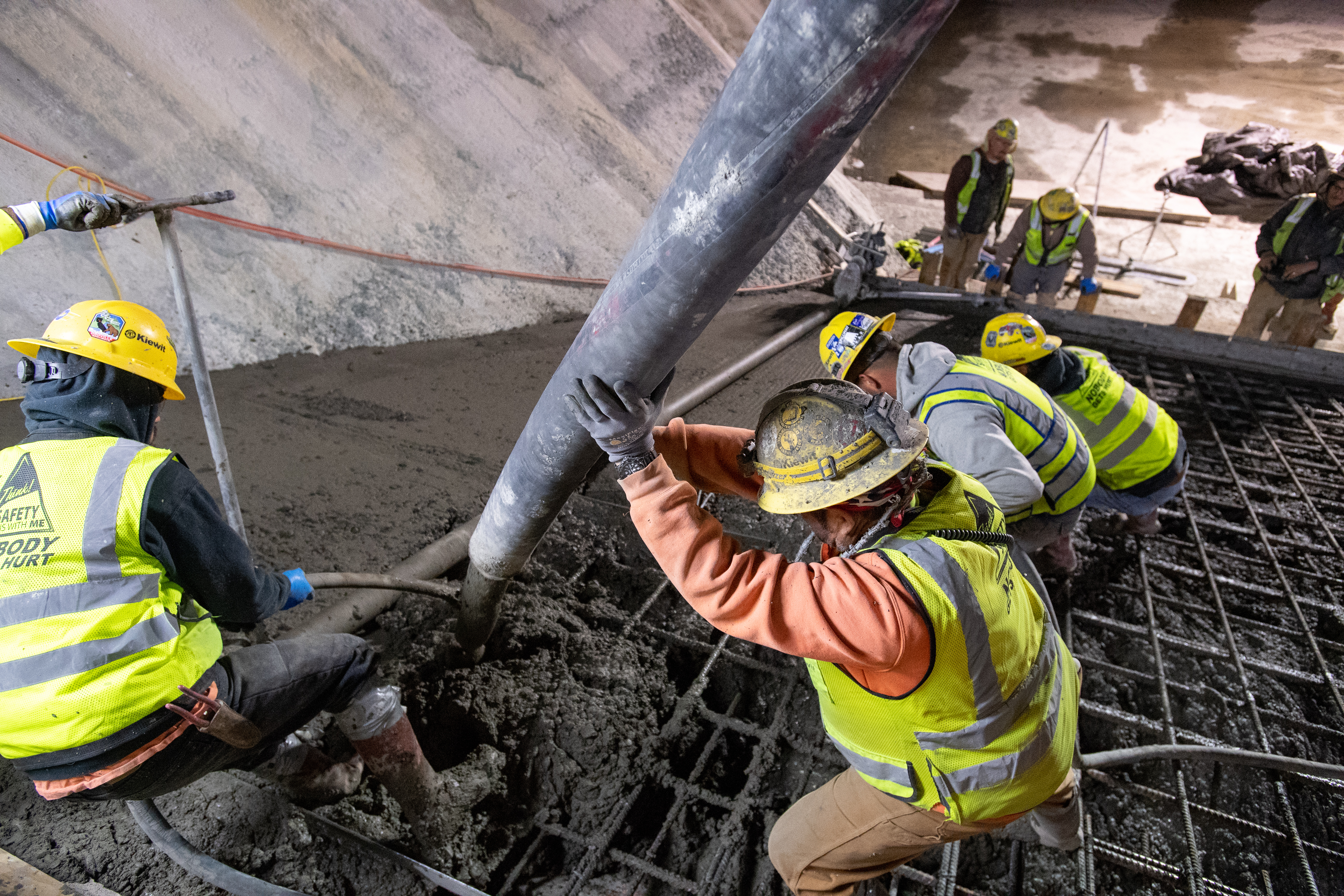Transform retail operations with Zebra’s retail technology solutions, featuring hardware and software for improving inventory management and empowering teams.
Streamline operations with Zebra’s healthcare technology solutions, featuring hardware and software to improve staff collaboration and optimize workflows.
Enhance processes with Zebra’s manufacturing technology solutions, featuring hardware and software for automation, data analysis, and factory connectivity.
Zebra’s transportation and logistics technology solutions feature hardware and software for enhancing route planning, visibility, and automating processes.
Learn how Zebra's public sector technology solutions empower state and local governments to improve efficiency with asset tracking and data capture devices.
Zebra's hospitality technology solutions equip your hotel and restaurant staff to deliver superior customer and guest service through inventory tracking and more.
Zebra's market-leading solutions and products improve customer satisfaction with a lower cost per interaction by keeping service representatives connected with colleagues, customers, management and the tools they use to satisfy customers across the supply chain.
Empower your field workers with purpose-driven mobile technology solutions to help them capture and share critical data in any environment.
Zebra's range of Banking technology solutions enables banks to minimize costs and to increase revenue throughout their branch network. Learn more.
Zebra's range of mobile computers equip your workforce with the devices they need from handhelds and tablets to wearables and vehicle-mounted computers.
Zebra's desktop, mobile, industrial, and portable printers for barcode labels, receipts, RFID tags and cards give you smarter ways to track and manage assets.
Zebra's 1D and 2D corded and cordless barcode scanners anticipate any scanning challenge in a variety of environments, whether retail, healthcare, T&L or manufacturing.
Zebra's extensive range of RAIN RFID readers, antennas, and printers give you consistent and accurate tracking.
Choose Zebra's reliable barcode, RFID and card supplies carefully selected to ensure high performance, print quality, durability and readability.
Zebra's location technologies provide real-time tracking for your organization to better manage and optimize your critical assets and create more efficient workflows.
Zebra's rugged tablets and 2-in-1 laptops are thin and lightweight, yet rugged to work wherever you do on familiar and easy-to-use Windows or Android OS.
With Zebra's family of fixed industrial scanners and machine vision technologies, you can tailor your solutions to your environment and applications.
Zebra’s line of kiosks can meet any self-service or digital signage need, from checking prices and stock on an in-aisle store kiosk to fully-featured kiosks that can be deployed on the wall, counter, desktop or floor in a retail store, hotel, airport check-in gate, physician’s office, local government office and more.
Adapt to market shifts, enhance worker productivity and secure long-term growth with AMRs. Deploy, redeploy and optimize autonomous mobile robots with ease.
Discover Zebra’s range of accessories from chargers, communication cables to cases to help you customize your mobile device for optimal efficiency.
Zebra's environmental sensors monitor temperature-sensitive products, offering data insights on environmental conditions across industry applications.
Enhance frontline operations with Zebra’s AI software solutions, which optimize workflows, streamline processes, and simplify tasks for improved business outcomes.
Empower your frontline with Zebra Companion AI, offering instant, tailored insights and support to streamline operations and enhance productivity.
The everything you need to rapidly and cost effectively develop high-performance AI vision applications on Zebra mobile computers.
Zebra Workcloud, enterprise software solutions boost efficiency, cut costs, improve inventory management, simplify communication and optimize resources.
Keep labor costs low, your talent happy and your organization compliant. Create an agile operation that can navigate unexpected schedule changes and customer demand to drive sales, satisfy customers and improve your bottom line.
Drive successful enterprise collaboration with prioritized task notifications and improved communication capabilities for easier team collaboration.
Get full visibility of your inventory and automatically pinpoint leaks across all channels.
Reduce uncertainty when you anticipate market volatility. Predict, plan and stay agile to align inventory with shifting demand.
Drive down costs while driving up employee, security, and network performance with software designed to enhance Zebra's wireless infrastructure and mobile solutions.
Explore Zebra’s printer software to integrate, manage and monitor printers easily, maximizing IT resources and minimizing down time.
Make the most of every stage of your scanning journey from deployment to optimization. Zebra's barcode scanner software lets you keep devices current and adapt them to your business needs for a stronger ROI across the full lifecycle.
RFID development, demonstration and production software and utilities help you build and manage your RFID deployments more efficiently.
RFID development, demonstration and production software and utilities help you build and manage your RFID deployments more efficiently.
Zebra DNA is the industry’s broadest suite of enterprise software that delivers an ideal experience for all during the entire lifetime of every Zebra device.
Advance your digital transformation and execute your strategic plans with the help of the right location and tracking technology.
Boost warehouse and manufacturing operations with Symmetry, an AMR software for fleet management of Autonomous Mobile Robots and streamlined automation workflows.
The Zebra Aurora suite of machine vision software enables users to solve their track-and-trace, vision inspection and industrial automation needs.
Zebra Aurora Focus brings a new level of simplicity to controlling enterprise-wide manufacturing and logistics automation solutions. With this powerful interface, it’s easy to set up, deploy and run Zebra’s Fixed Industrial Scanners and Machine Vision Smart Cameras, eliminating the need for different tools and reducing training and deployment time.
Aurora Imaging Library™, formerly Matrox Imaging Library, machine-vision software development kit (SDK) has a deep collection of tools for image capture, processing, analysis, annotation, display, and archiving. Code-level customization starts here.
Aurora Design Assistant™, formerly Matrox Design Assistant, integrated development environment (IDE) is a flowchart-based platform for building machine vision applications, with templates to speed up development and bring solutions online quicker.
Designed for experienced programmers proficient in vision applications, Aurora Vision Library provides the same sophisticated functionality as our Aurora Vision Studio software but presented in programming language.
Aurora Vision Studio, an image processing software for machine & computer vision engineers, allows quick creation, integration & monitoring of powerful OEM vision applications.
Adding innovative tech is critical to your success, but it can be complex and disruptive. Professional Services help you accelerate adoption, and maximize productivity without affecting your workflows, business processes and finances.
Zebra's Managed Service delivers worry-free device management to ensure ultimate uptime for your Zebra Mobile Computers and Printers via dedicated experts.
Find ways you can contact Zebra Technologies’ Support, including Email and Chat, ask a technical question or initiate a Repair Request.
Zebra's Circular Economy Program helps you manage today’s challenges and plan for tomorrow with smart solutions that are good for your budget and the environment.
The Zebra Knowledge Center provides learning expertise that can be tailored to meet the specific needs of your environment.
Zebra has a wide variety of courses to train you and your staff, ranging from scheduled sessions to remote offerings as well as custom tailored to your specific needs.
Build your reputation with Zebra's certification offerings. Zebra offers a variety of options that can help you progress your career path forward.
Build your reputation with Zebra's certification offerings. Zebra offers a variety of options that can help you progress your career path forward.

MOSAIC Refines Quality Assessment with Vision System
MOSAIC specializes in robotics and industrial automation with a particular emphasis on the design, construction and maintenance of vision systems for a variety of sectors. One of its key inspection systems in the automotive vertical conducts surface quality inspections on brake disks.
Zebra Success Story: MOSAIC
Overview: Manufacturing Challenge
Implement a quality-control inspection system to check brake disks for traces of sand and debris, then remove non-optimal units from the production line.
Benefits / Outcomes
- Custom vision system that detects subtle defects invisible to the naked eye
- Single vision system performs quality assurance for 200+ disk models
- Enhanced quality-control solution reliably removes bad units from the production line
- Standardized inspection process that previously varied due to human review
Customer
MOSAIC
Sora, Italy
Industry
Manufacturing
Solutions
About MOSAIC
MO.S.A.I.C is a global team specialized in robotics and industrial automation with offices in Italy, Brazil, Germany and Serbia. Its engineers have focused on the design, construction and maintenance of vision systems for sectors including automotive, food and beverage, paper, logistics and pharmaceutical production since 2014.
The Challenge
A key inspection system in its automotive vertical conducts surface quality inspections on car and truck brake disks. Though the system had been running effectively with objective human assessment, MOSAIC sought an enhanced quality-control solution to exclude bad units more reliably and effectively from the production line. Its team evaluated several options, and decided upon Zebra’s software and components, largely because of the excellent technical support, software features, performance and great price-to-quality ratio its products afford.
The highest quality assurance is integral to the production of brake disks, which are made through a sand-casting process, a metal casting process characterized by using sand as the mold material. After the sand-casting process, disks are cleaned of sand inside a big cleaning drum. Sometimes, the cleaning process is not optimal and sandy residue remains. MOSAIC’s system checks for sand and sintering traces on the disk surface, removing bad or non-optimal units from the production line. Sand and sintering debris can damage the machining tool or reduce its life cycle in further production steps.
With human inspectors, it is natural that product samples, especially those close to the limit between good and bad, will be assessed differently by different operators. The likelihood of these differences increases after humans have worked a few hours and are tired, but with a vision system, in addition to the enhanced quality control, the inspections are repeatable 24 hours a day and the machines perform faster than any operator could.
Marco Pistilli, IT Engineer, Machine-Vision System and Software Developer, MOSAIC
The Solution
From start to finish, the production process for brake disks encompasses the sand-casting phase, sand removal and disk separation, cleaning/blasting, machine-vision quality inspection and finally, the disk machining phase.
Three people from MOSAIC participated in developing the machine vision project: Luciano Cecchi, a senior expert engineer responsible for the machine design and optical calculation; Pistilli, who oversaw hardware selection/setup and software development; and Alessandro Viola, a programmable logic controller (PLC) expert programmer for the PLC hardware selection and software logic development. “I had the chance to learn new skills by following Vision Academy training, which has proven of tremendous benefit,” Pistilli confirms.
To ensure the highest quality standards, the custom vision system was developed and tuned to highlight subtle defects that only experienced quality inspection workers would notice, defects that would be invisible to the naked eye. “Challenges are our strength,” smiles Pistilli. “We do what other companies do not want to do because of risks and uncertainty of results. We like challenges.” MOSAIC selected flowchart-based Aurora Design Assistant vision software because of its effectiveness, precision and rapid response.
Aurora Design Assistant software runs on an HP workstation equipped with an Intel® Core™ i9 processor and three Zebra Concord PoE frame grabbers, which acquire and process the images coming from nine Teledyne DALSA cameras—seven Genie Nanos and two line scan models. A custom-built lighting system uses MidOpt filters on camera lenses and spotlights. The vision system interacts with a PLC via fast-scan modules and an encoder; hardware triggers come directly from the PLC.
Every camera has a different shooting position; images are captured while the disks pass through the inspection tunnel on the moving production line. “As the system comprises multiple cameras, Aurora Design Assistant is the right tool because of its ability to spread the load over the available CPU cores, and the ability to synchronize all elements of the systems with ease,” Pistilli notes. “This flowchartbased software allowed our developers to focus more on achieving our desired accuracy and performance and the algorithm logic, instead of worrying about coding.”
The Zebra Difference: Outcome and Benefits
To achieve its quality-assurance metrics, the team at MOSAIC spent several months testing lighting/camera setups and optimal geometrical constraint combinations. Three challenges were of key consideration.
First, MOSAIC wanted to inspect every angle of the disk surface without stopping the production line or needing to invert or rotate each disk as it passed. The short cycle time made physical displacement of the disk a hindrance to the process, and avoidable through use of multiple cameras. Integrating nine different cameras to catch every disk angle helped address this concern.
The MOSAIC team also wished to conduct quality assurance for more than 200 different disk models using the same vision setup. “We overcame these challenges by developing an effective background removal algorithm to process all the disk models with the same logic and processing algorithm. With this capability, there is no need to redefine regions of interest,” Pistilli reports. “Aurora Design Assistant let us create efficient algorithms for analysis, too, implementing loops and reconfiguring steps dynamically to obtain the best performance results.”
Finally, performing image acquisition with absolute precision was central to the system development. Using the convenient Operator View feature in Aurora Design Assistant, the operator manages recipes and creates different sets of parameters for each camera on the line. Operators can customize the image color-map to best match their needs. A filmstrip allows recall to previous pictures and relative datasets for further analysis. A dataset is generated for each analysis for further investigation from the quality-assurance department. “The user interface is so easy to use, it’s like using a tablet because of the wide touchscreen,” says Pistilli. “The MOSAIC team leveraged the industrial communication tools and implemented fast-scan PLC hardware plus an encoder to get perfectly timed shots,” affirms Viola.
Conclusion
With the new brake disk quality inspection system up and running, the MOSAIC team has started working on a similar project for pharmaceutical laboratory machine automation. “Aurora Design Assistant software allows us to quickly deploy feasibility studies and application demos within the production software,” Pistilli concludes. “The completeness of its tools helps us to work on both 2D and 3D systems. Truly, Aurora Design Assistant offers us all we need to deploy an effective machine-vision system.”
Featured Products and Solutions
Related Resources
Legal Terms of Use Privacy Policy Supply Chain Transparency
ZEBRA and the stylized Zebra head are trademarks of Zebra Technologies Corp., registered in many jurisdictions worldwide. All other trademarks are the property of their respective owners. ©2025 Zebra Technologies Corp. and/or its affiliates.







